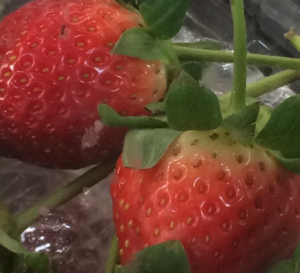 Although cool weather certainly makes Floridians feel like they’re experiencing winter, Florida farms are working in overdrive this February producing agricultural products for a whole lot of people who, because of COLD weather, are not able to grow their own crops. .
Although cool weather certainly makes Floridians feel like they’re experiencing winter, Florida farms are working in overdrive this February producing agricultural products for a whole lot of people who, because of COLD weather, are not able to grow their own crops. .
The Florida Department of Agriculture and Consumer Services states that “Consumers around the world look for and value the “Fresh From Florida” label”. Because seasonal products are fresher and tastier, nutritional value is optimized. Often, seasonal products are more economical. In fact, fall plantings are not only being labeled as Fresh from Florida but also as what is in season right now. February’s list is quite impressive; especially when you think about the delicate nature of a strawberry!
Can you believe that each winter close to 300 million pounds of strawberries are grown in Central Florida, earning the area around Plant City the title Winter Strawberry Capital of the World!
Florida strawberries are indeed delicious and they’re full of Vitamin C and other vitamins and minerals – a real nutrient dense food.
When shopping for Florida Fresh strawberries:
- Know that strawberries, once picked, do not ripen further.
- Only purchase strawberries that can be consumed in a few days. Even when properly stored in a refrigerator, strawberries last only a few days.
Choose berries that are:
- Firm, plump, and free of mold.
- Shiny, deep red in color with attached green caps.
Avoid strawberries that are:
- Dull in color or have green or yellow patches.
If you are buying strawberries prepackaged in container ensure:
- Strawberries are not packed too tightly (which may cause them to become crushed and damaged.
- The container has no signs of stains or moisture, (indication of possible spoilage).
- The cap, stem and white hull remain intact (this prevents unnecessary loss of moisture).
- Strawberries are not left at room temperature or exposed to sunlight (this aides in their spoiling).
Since strawberries are very perishable, strawberries should not be washed until right before eating or using in a recipe.
- Do not remove strawberry caps and stems until after they have been gently washed under cold running water and patted dry. This will prevent them from absorbing excess water, which can degrade strawberries’ texture and flavor and cause them to spoil.
To freeze strawberries:
- Gently wash strawberries and pat dry. The cap and stem can either be removed or left intact, depending upon what you will do with them once they are thawed.
- Arrange strawberries in a single layer on a flat pan or cookie sheet and place them in the freezer. (lining the tray with a piece of parchment paper makes for easy removal once frozen)
- Once frozen, transfer the strawberries to a heavy plastic bag and return them to the freezer where they will keep for up to one year.
Try these simple ideas for including strawberries in your next meals and snacks:
- Strawberry and Spinach Salad
- Strawberry-Banana Smoothie
- Strawberry, Pistachio and Goat Cheese Pizza
Fore more information, contact: http://strawberrysue.com/
![]()
Posted: February 21, 2016
Category: Agriculture, Crops
Tags: Crops, February, Living Well In The Panhandle, Season

